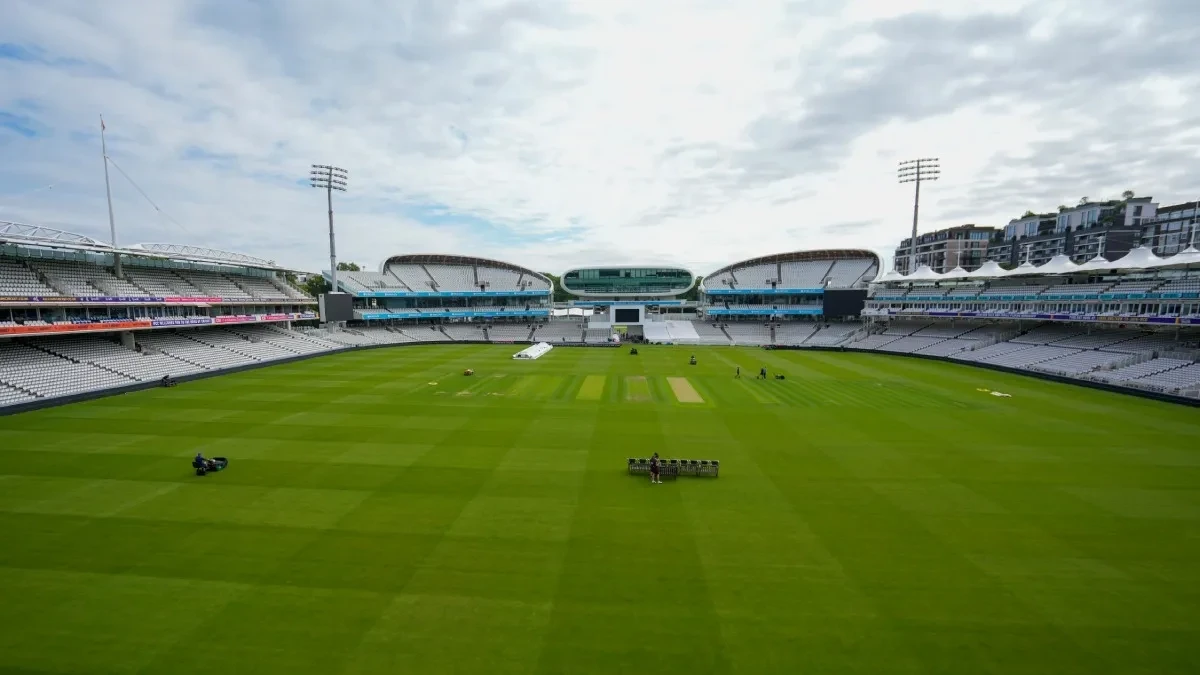As India and England prepare to face off in the third Test of their five-match series at the iconic Lord’s Cricket Ground from July 10, all eyes are not just on team selections or the return of Jofra Archer and Jasprit Bumrah, but also on one of cricket’s most unique natural features – the Lord’s slope.
The slope at Lord’s is a defining characteristic of the ground and has been the subject of fascination, strategy, and even controversy over the decades.
Let us take a look at what exactly the slope is, how it impacts the game, and why it matters as much as the players themselves at the Home of Cricket.
What Is the Lord’s Slope?
The Lord’s Cricket Ground, located in St John’s Wood, London, is built on uneven terrain. As a result, there is a natural gradient of about 2.5 meters (8 feet) that runs from the north-west (near the Pavilion End) down to the south-east (near the Nursery End). In simpler terms, one side of the ground is significantly higher than the other, and this slant affects almost every aspect of the game.
How Does It Impact Bowlers?
The slope is particularly influential for fast bowlers and swing bowlers:
- Right-arm bowlers bowling from the Pavilion End have the slope going from right to left. This can assist in natural outswingers to right-handed batters.
- From the Nursery End, the slope runs from left to right for the bowler, aiding natural inswingers to right-handers.
This subtle yet significant change in angle often enhances lateral movement, especially for bowlers who know how to exploit it. This is one of the reasons English bowlers, who grow up learning how to bowl with the slope, are particularly dangerous at Lord’s.
For spinners, the slope can also affect drift and bounce. Off-spinners may get more bounce bowling into the slope, while leg-spinners may prefer bowling with the slope to generate angle and skid.
What About Batting?
For batters, the slope at Lord’s presents a mental and technical challenge. The movement off the surface can be deceptive:
- Balls that appear to be heading straight may move away or into the batter due to the slope.
- LBW decisions and judging off-stump can become tricky, especially when the ball is angling in from the Pavilion End.
This is why even experienced international batters take time to adjust to Lord’s, and why it’s often referred to as a true test of technique.
How Will It Affect India vs England?
With Jofra Archer making his Test return after four years and Jasprit Bumrah expected to return after resting the Edgbaston Test, the battle of pace could be shaped significantly by the slope.
- Archer, with his high pace and bounce, could use the slope to generate steep bounce and natural movement, especially from the Pavilion End.
- Bumrah, who is lethal with both the new and old ball, will likely be strategic in choosing ends based on swing conditions and slope assistance.
India’s batters, especially the openers, will need to be mindful of early swing and how the slope might exaggerate movement. Likewise, India’s bowlers like Mohammed Siraj and Ravindra Jadeja will have to factor in how the slope aids reverse swing and spin.
Historical Significance
Many iconic spells at Lord’s – from Glenn McGrath’s demolition in 2005 to James Anderson’s artistry – have used the slope to devastating effect. It’s one of those rare cricketing features that isn’t man-made but shapes matches as much as skill does.
As India and England head into the third Test with the series tantalisingly poised at 1-1, the Lord’s slope adds a layer of tactical intrigue. Whether it’s Archer’s comeback spell or Bumrah’s new-ball burst, the slope will play a quiet but crucial role in determining the outcome at the Home of Cricket.
